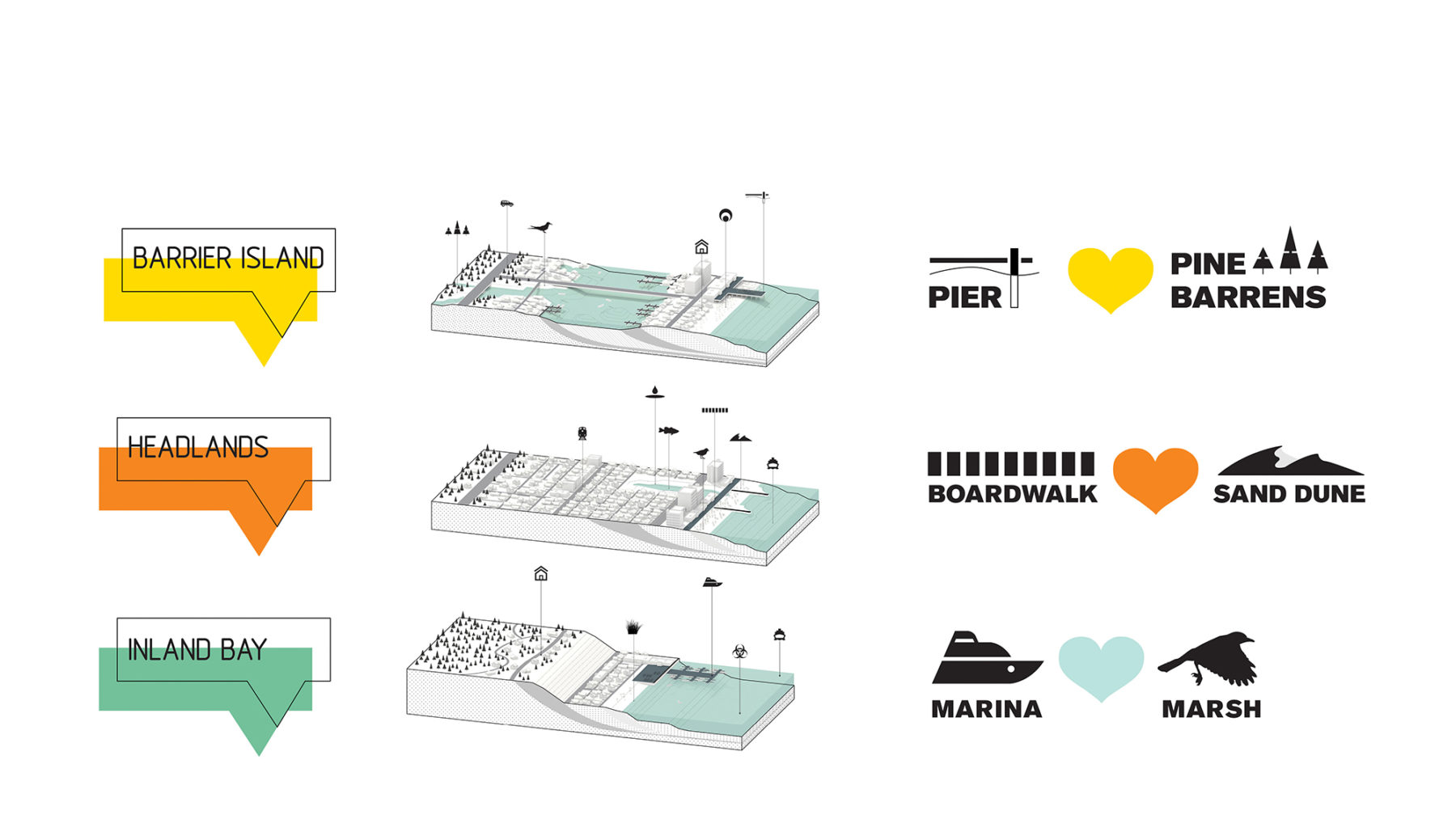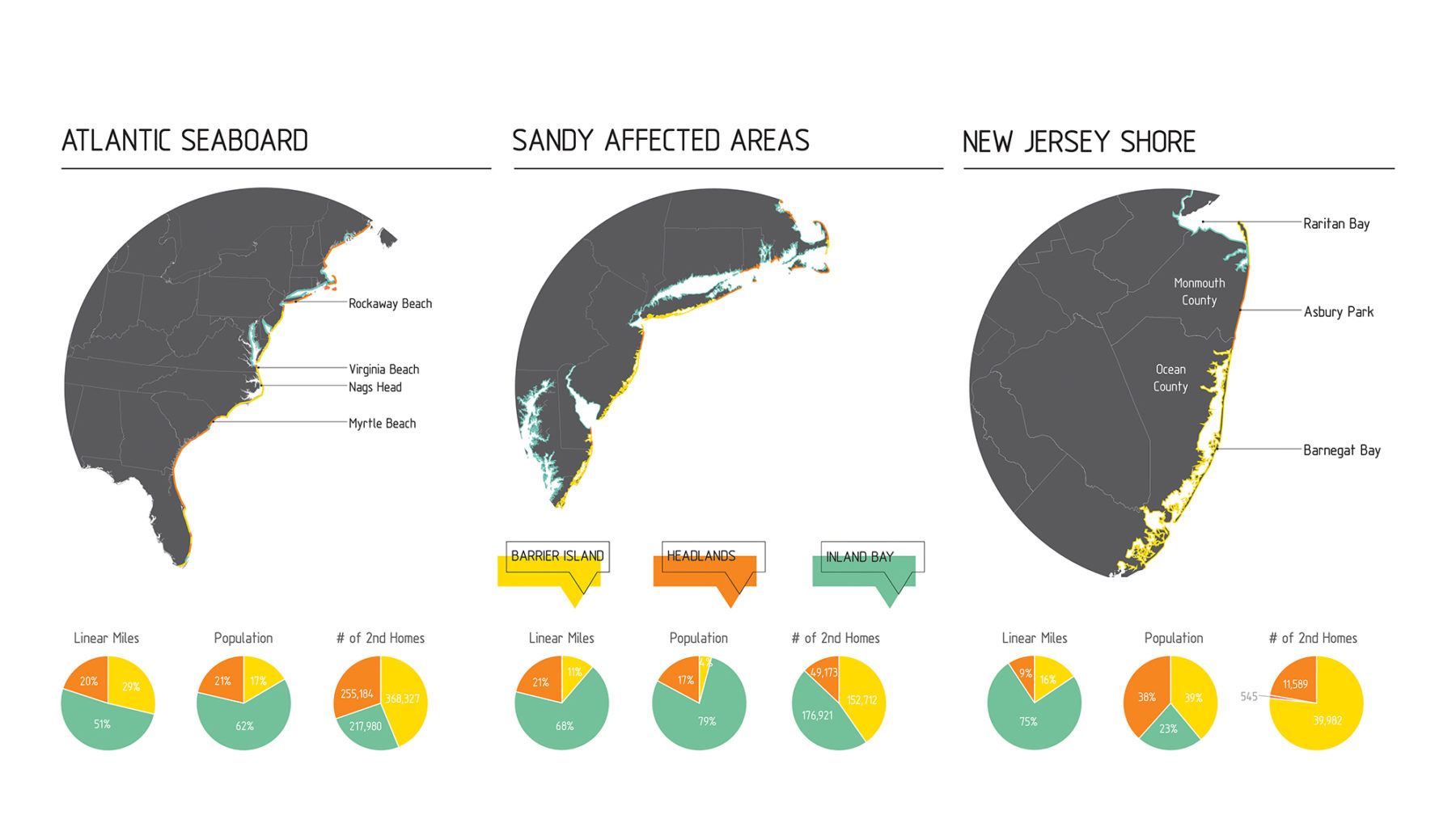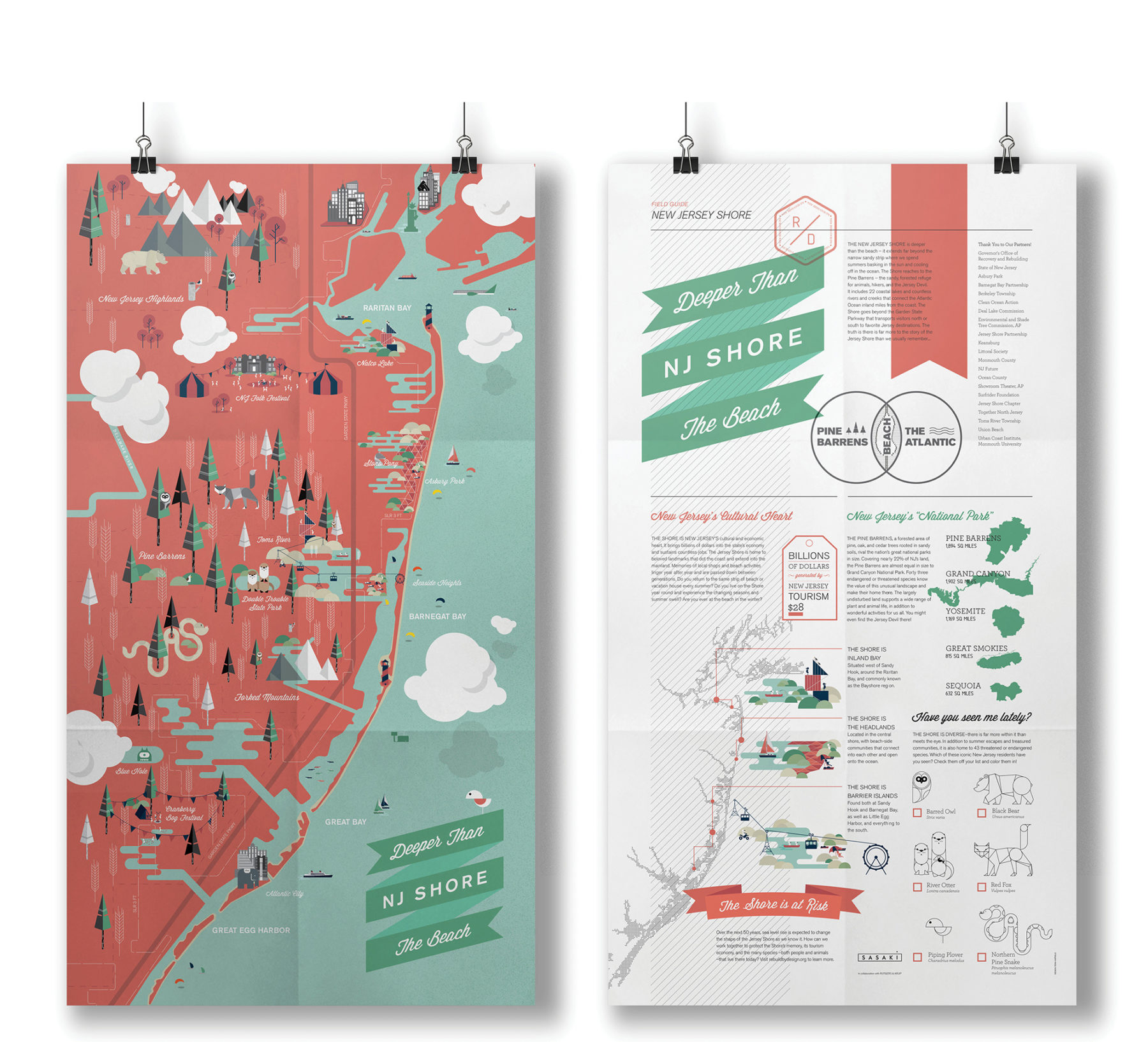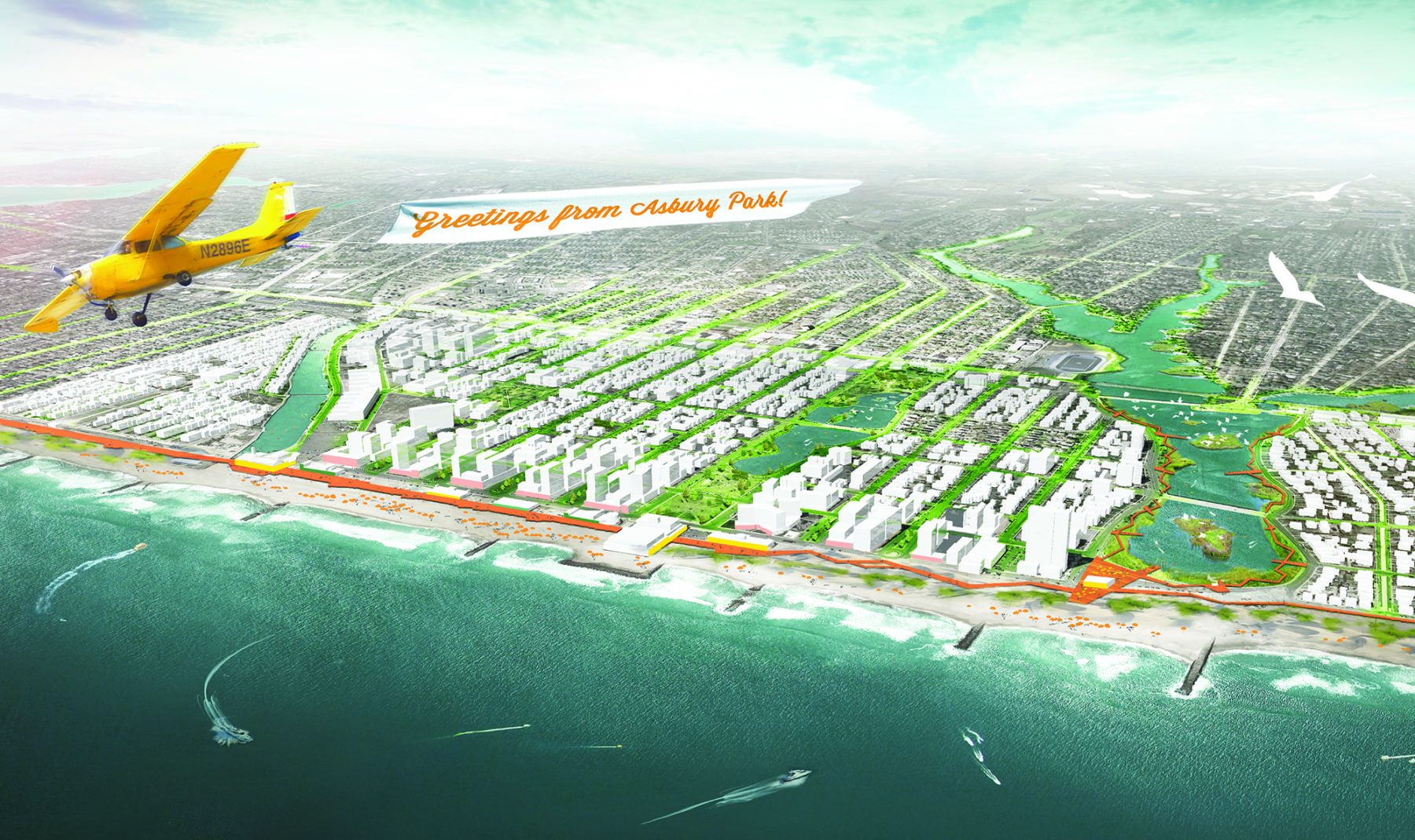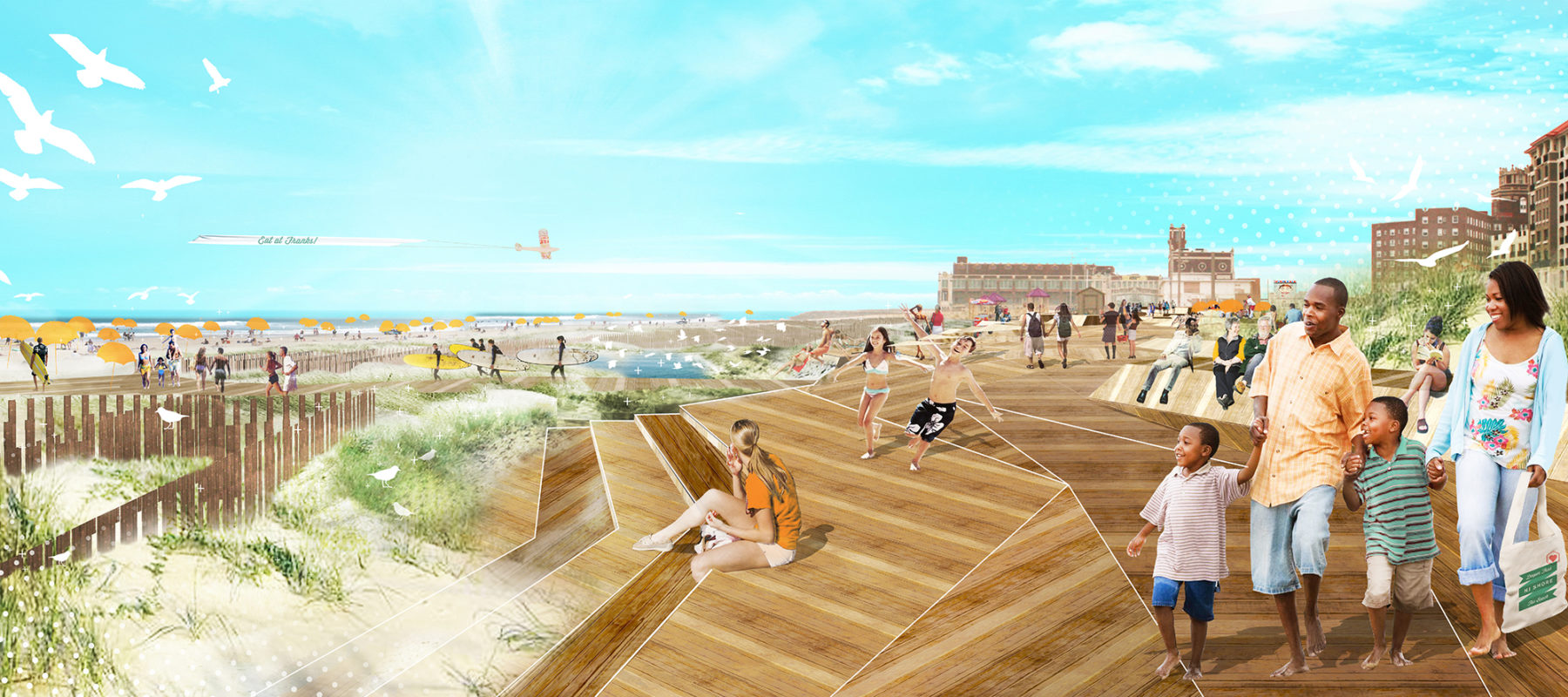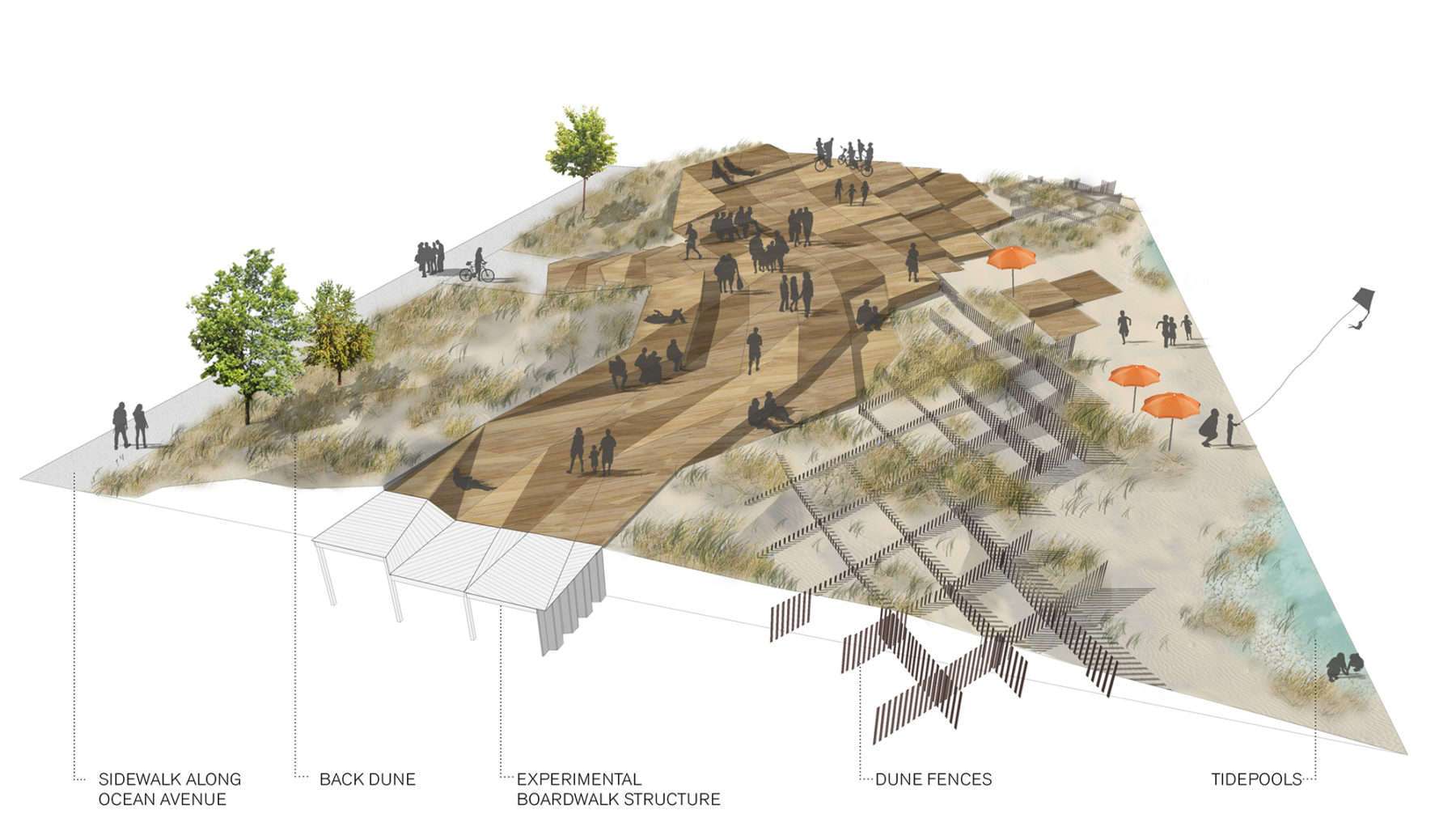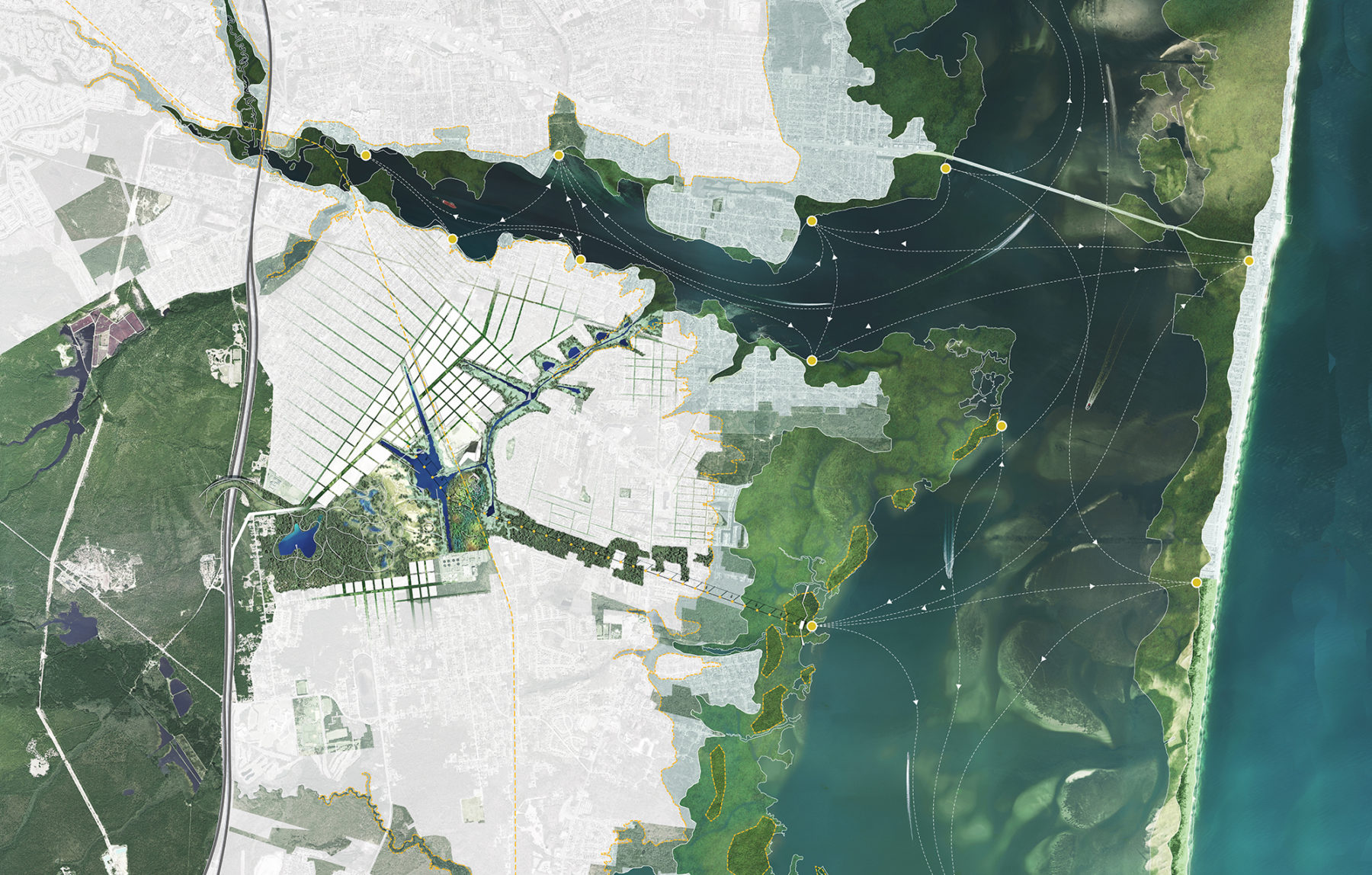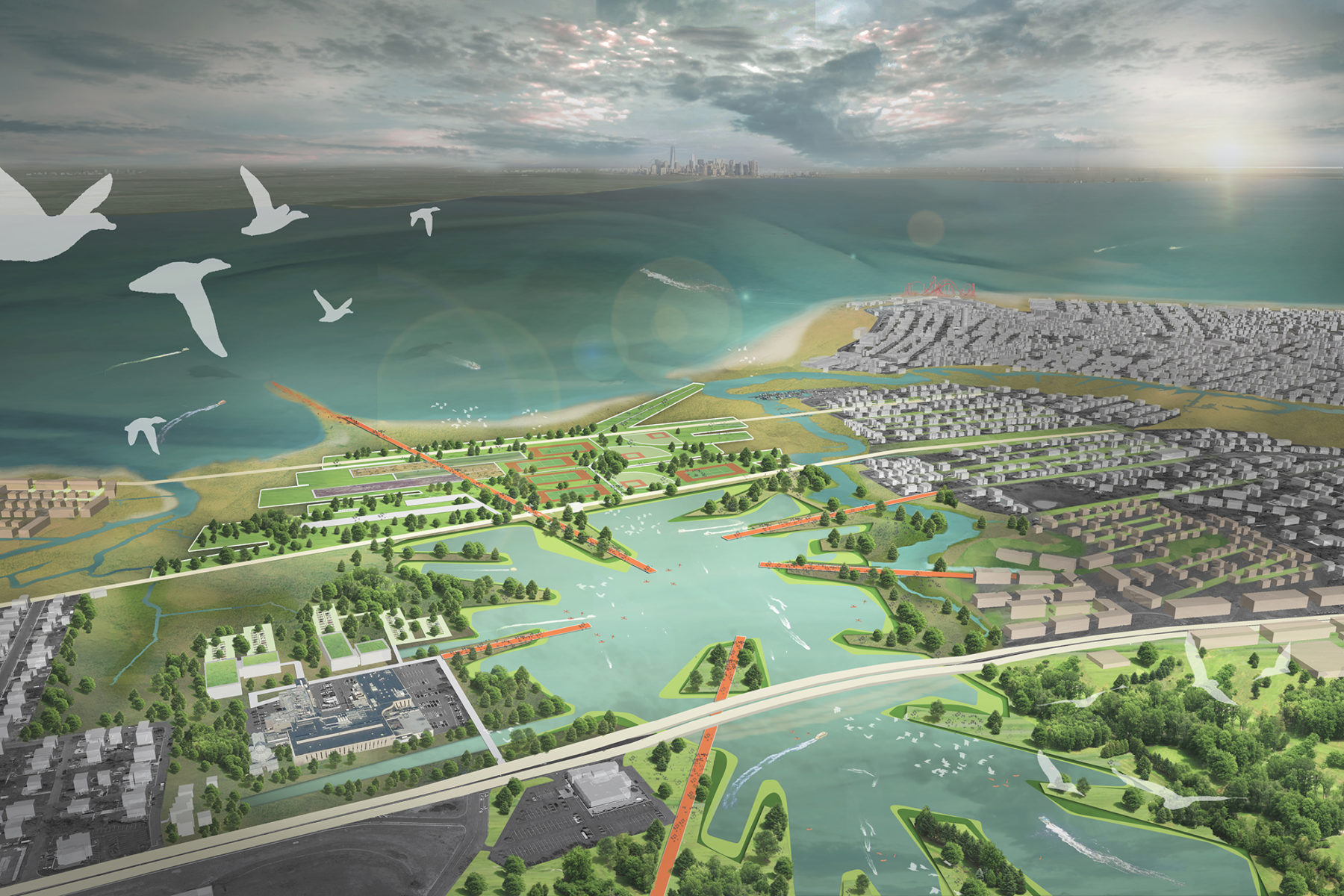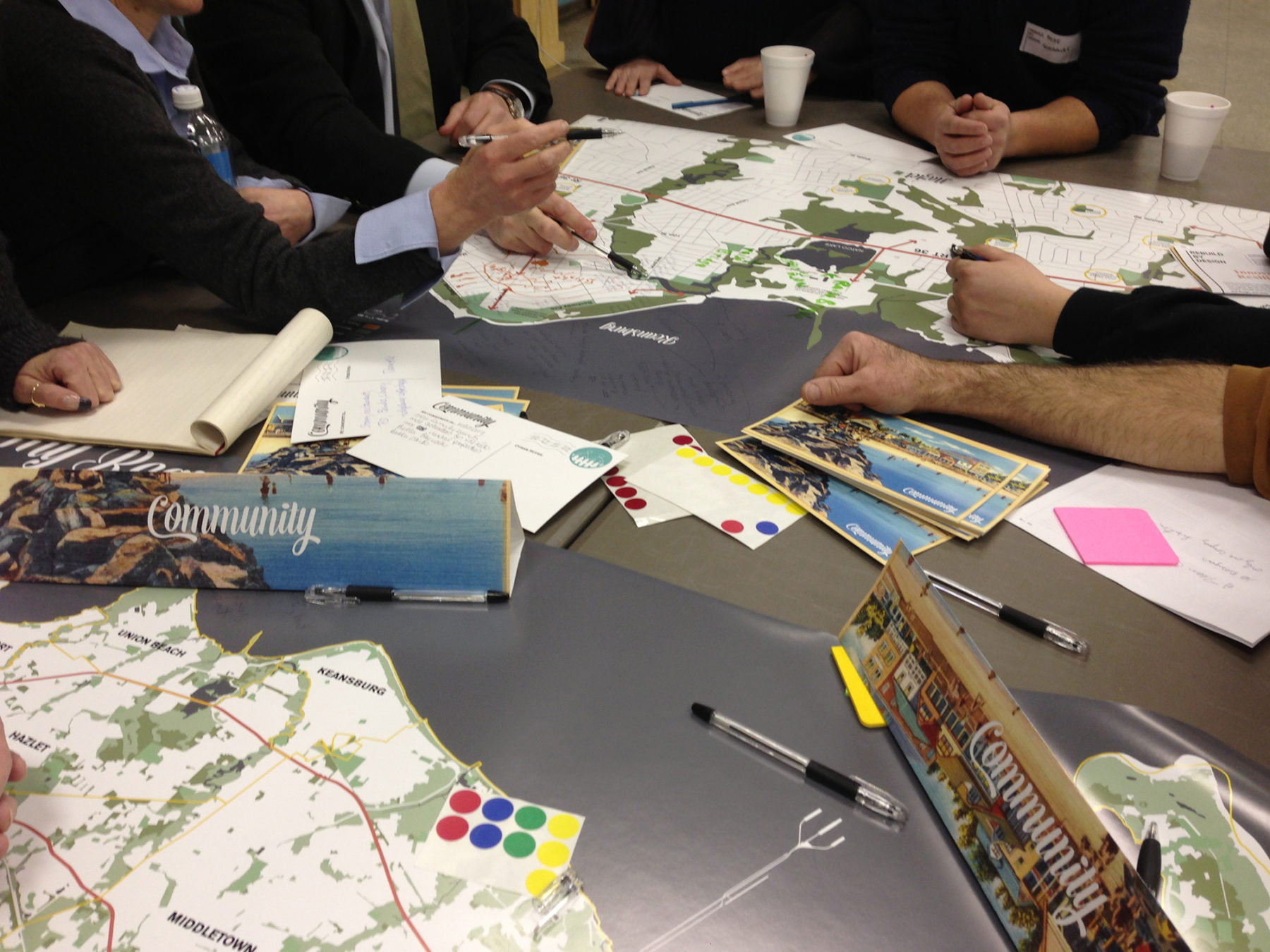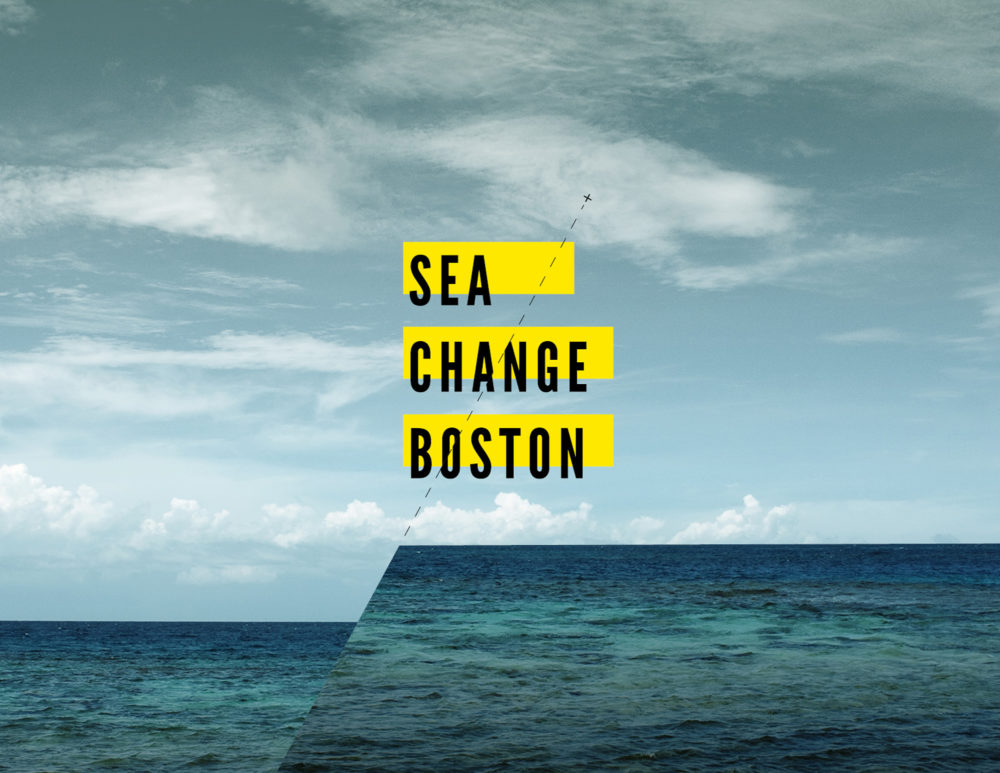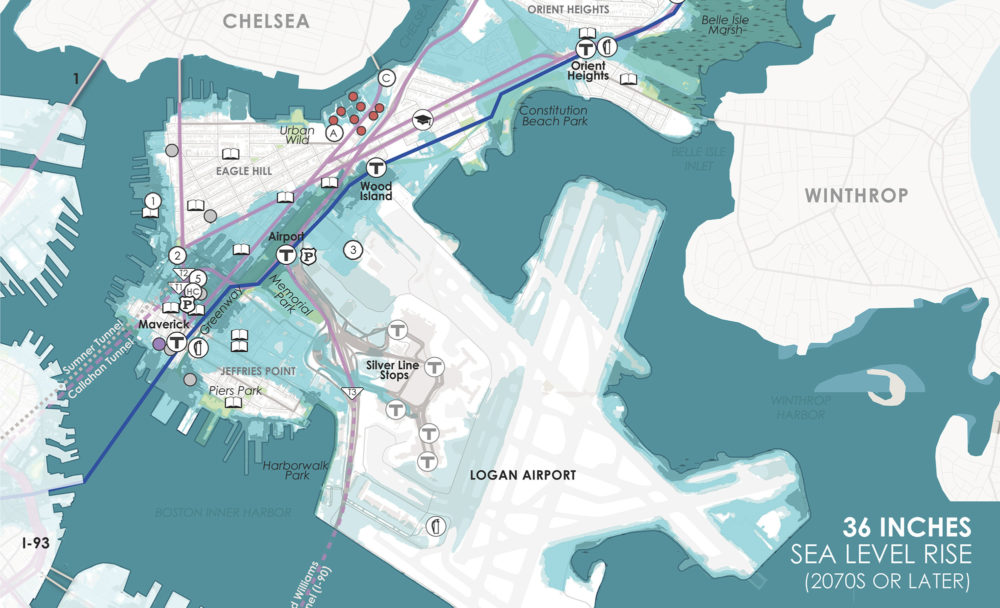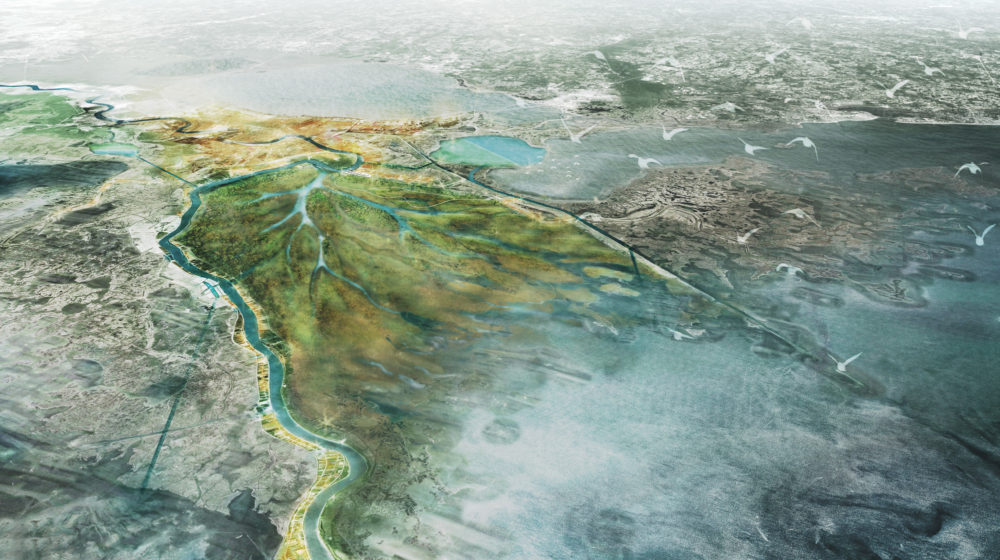Rebuild By Design
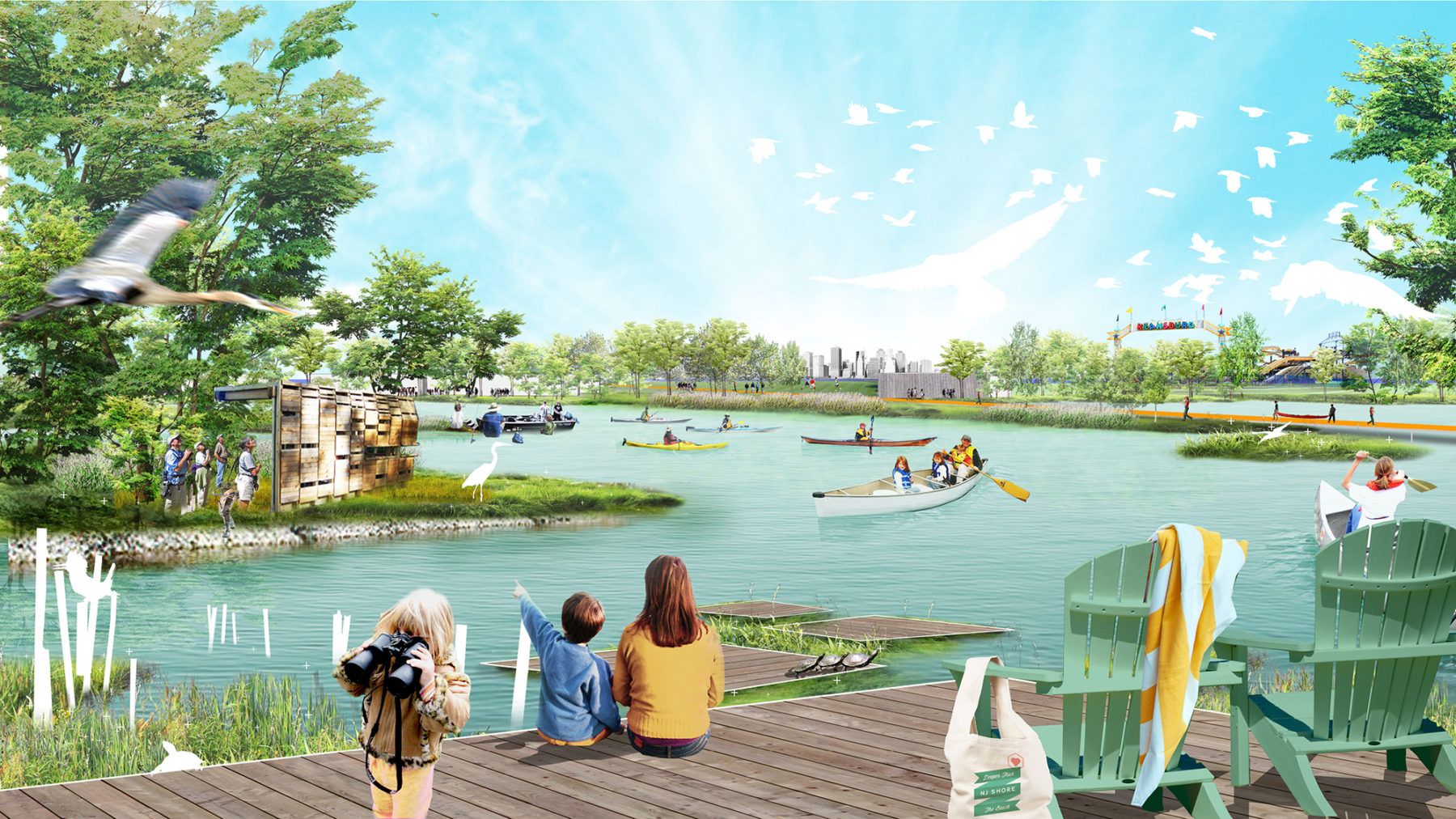
An initiative of the Hurricane Sandy Rebuilding Task Force, Rebuild by Design is a competition that asks some of the world’s most talented design professionals to envision solutions that increase resilience across the Sandy-affected region. Leveraging non traditional partnerships among designers, scientists, the local communities, and the federal government, Rebuild by Design is developing resilience solutions that are locally contextual, but also regionally scalable. Selected proposals will be implemented through both public and private funding.
Sasaki’s proposal—selected as one of 10 from the 148 proposals submitted from around the world—focuses on resiliency for the Jersey Shore. Our vision for an overall framework is built upon one of the Jersey Shore’s most valuable assets: the beach.
New Jersey’s beaches compose a complex system of fluctuating populations, transit networks, settlement patterns, and ecological conditions that are unique to the Atlantic coast. Within this framework, there are three coastal landform typologies: barrier islands, the headlands, and the inland bay. Each offers unique characteristics and vulnerabilities, and they all appear in many other areas along the eastern seaboard. Sasaki’s design evolves from not only a physical and ecological understanding of the three coastal typologies, but in fact a cultural understanding. Ultimately, the project goal is to protect future communities as well as the role of the beach as a cultural icon and economic driver for the Jersey Shore. To accomplish this, ecological relationships, beach infrastructure, tourism, and settlement patterns will be adapted to accommodate new modes of beach travel. Solutions for the three typologies will work in coordination and build off each other to create a new type of resiliency—one that not only protects the beach, but also enhances social capital and connectivity.
Barrier Islands
Significant development has occurred along the beaches of the Jersey Shore’s barrier islands in recent decades, but Hurricane Sandy brought to light how vulnerable these areas are, constantly shifting with the energy of sea and storm. Sasaki’s proposal encourages development that extends deeper inland, both as a means of protection and to create a more diversified tourism economy. The site for this project includes Seaside Heights, Toms River, and Berkeley Township.
Headlands
The headlands are the most exposed stretch of the New Jersey shore, with open ocean views and direct wind and waves that necessitate regular sand replenishment. It is here that the area’s iconic boardwalk is located—attractive to tourists, but not to most wildlife. Sasaki’s design explores a more organic boardwalk form. The new boardwalk provides infrastructure to capture sand and form dunes, creating protection while also serving as habitat area for beach wildlife to attract visitors. The design also improves inland lakes and green infrastructure to absorb surge and provide an improved urban character. The site for this project is Asbury Park, New Jersey.
Inland Bay
The inland bay is the most complex region of the New Jersey shore—a confluence of industrial uses, densely-populated maritime communities, influence from New York City’s economy, and the ecological conditions of the estuary. Sasaki’s design rethinks the marina, which accommodates both commercial fishing and recreation. The marina will be augmented with manmade marshlands to increase coastal protection while providing new sources of value for adjacent ecosystems and communities. The marsh landscape will also be designed to mitigate contamination. The site is the Natco Lake district.
